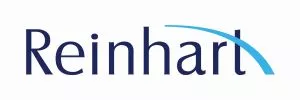- within Technology topic(s)
- with Senior Company Executives, HR and Finance and Tax Executives
- in European Union
- in European Union
- in European Union
- with readers working within the Technology and Law Firm industries
With the launch of Sora 2 (an AI video-audio generation system) in September 2025, the ability for a person to create realistic AI-generated videos has become easier than ever. Even before Sora 2, people used tools like DALLE and Midjourney to generate AI images, and tools like ChatGPT and NovelAI to generate stories and characters. Although anyone can use these tools to create outputs, these outputs do not automatically qualify for copyright protection. This creates legal uncertainty regarding the scope and enforcement of a copyright related to generative AI, and presents important questions: (1) How much "human creativity" is needed to secure a copyright when an AI tool is used?; and (2) What is the line between human and non-human contributions?
Human Authorship is Needed to Obtain a Copyright
In March of 2025, U.S. District Court for the District of Columbia reaffirmed the requirement that human authorship and creativity is required to obtain a copyright. In the case of Thaler v. Perlmutter, 130 F.4th 1039 (D.C. Cir. 2025) (see our previous alert), the court found that a computer-generated work made by an AI tool, the "Creativity Machine," without any input or intervention from a human author could not receive copyright protection because the "Copyright Act itself" and "the Constitution's Intellectual Property Clause requires human authorship."
The court noted that the use of modern technology does not prevent a person from obtaining a copyright. For example, when photography was introduced, the courts found that the photographer had a copyright in the image taken because the photographer made creative contributions like selecting the subject, angle, and lighting for the photo. Today, there is no question regarding whether the use of a camera creates a copyrightable interest. However, the line becomes blurred when an AI tool is used because it is less clear what creative aspects the human contributed and selected versus what the tool generated. In Thaler, no human contribution was made, so no copyright protection could be obtained.
In a case of first impression for the Copyright Office, the Office found that AI-generated images by Midjourney in a graphic novel, Zarya of the Dawn, were not protectable, but the arrangement of those images within the book and the story written by the author were protectable. Thus, for purposes of copyright ownership and enforcement, the graphic novel in its entirety has copyright protection, but the individual images in the book do not. This means that people could copy the individual images and that the author of the graphic novel would not be able to prevent them from doing so.
The Line Between Human and Non-Human Creation
Since the Zarya of the Dawn decision, the U.S. Copyright Office has maintained that an application for a copyright needs to disclaim any portion made by an AI tool. The Copyright Office has also found three categories that AI-generated works typically fall into. These categories change the scope and protection of the copyright for the work.
- Category 1: Not Copyrightable—Prompts that instruct an AI system to generate an output. Here, the output from the tool is entirely AI generated and the input from the human-author does not include enough creativity to be copyrightable.
- Category 2: Human Input is Copyrightable—Expressive inputs that can be perceived in AI-generated outputs. Here, the Copyright Office considers the initial input that was made solely by a human author, such as a first draft of a story or a drawing, as the copyrightable work. The modifications made by the AI tool are then treated like derivative work and not given copyright protection (e.g., style changes, additions, etc.).
- Category 3: Output May Be Copyrightable—Sufficient modification or arrangement of AI-generated outputs.
With respect to the third category, a human-author must make sufficient selection, refinement, and arrangement of AI-generated material for the output to be copyrightable. In a recent decision, the Copyright Office found that an AI-generated image, titled A Single Piece of American Cheese, was copyrightable. When making its determination, the Copyright Office found that the human-author had selected, coordinated, and arranged numerous AI-generated image fragments into a unified composition, similar to that of a collage artist. The human-author used a process called inpainting over 35 times across a 10-minute period to refine the existing elements and add new details. Here, the human-author of A Single Piece of American Cheese was able to demonstrate sufficient human creativity by recording the entire creation process and providing video evidence to the Copyright Office.
Generally, there is overlap with these categories, and many AI-generated outputs are made using more than one. For example, individuals may prompt Sora 2 for a video but then may select a specific output or request changes to the people, location or actions taken in the output. In this way, there is legal uncertainty regarding the scope and enforcement of a copyright when AI tools are used.
Conclusion
Although the line regarding copyrightability of AI-generated outputs is unclear, those wishing to use AI tools should make sure that they track what actions were taken by humans in the creation of any output. Keeping track of the "human creativity" used will bolster the ability to obtain a copyright on any inputs and outputs, allowing the human-author greater control and enforcement over the work.
Applying for copyright protection and enforcement of copyrights is legally nuanced, especially when AI is used. Thus, individuals or companies interested in more information on copyright applications or the use of generative AI should contact attorney Reagan Joy or another member of Reinhart's Artificial Intelligence Group.
The content of this article is intended to provide a general guide to the subject matter. Specialist advice should be sought about your specific circumstances.


